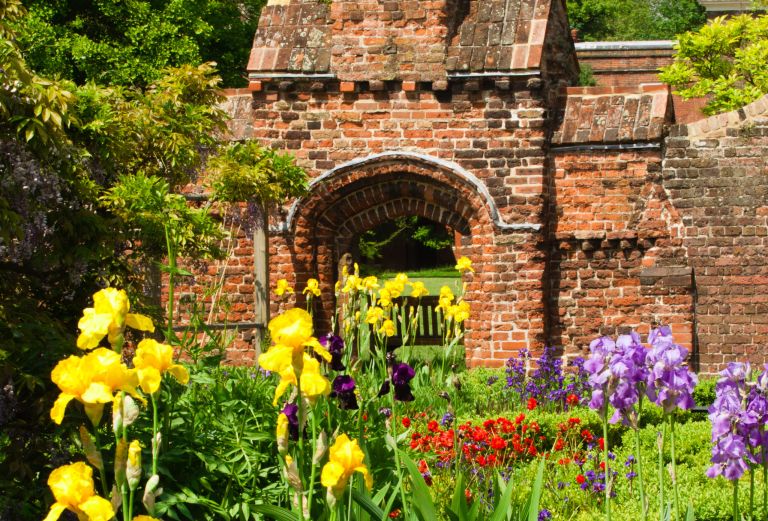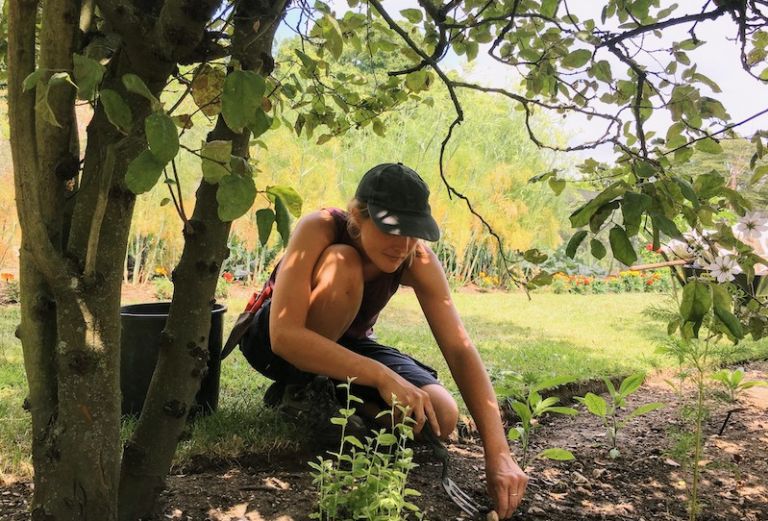Fulham Palace Trust announces microclimate emergency

Fulham Palace Trust continues to place carbon reduction and environmental issues at the heart of its work. We all face an ecological and climate emergency that threatens the future of our planet.
For over 1,000 years Fulham Palace has been a green oasis in this corner of west London. The botanical endeavours of various Bishops of London have created stunning gardens and introduced exotic plants species to the country. Today our beautiful garden is open seven days a week, free of charge, enjoyed by all who visit.
It is a year since we launched our biodiversity and climate change policy, and over that year we have seen further unprecedented weather events. We now join our neighbours the Chelsea Physic Garden in announcing a ‘microclimate emergency’. We hope that we can work with Chelsea Physic Garden and other gardens to talk about the impact of climate change on a local level, and ways we can all make small changes that make a difference.
Sian Harrington, chief executive of Fulham Palace Trust
The 13 acre site of Fulham Palace that you see today is a remnant of a once extensive country estate on the banks of the River Thames, stretching from Chiswick in the west, to Chelsea in the east, and up to Willesden in the north. It was owned by the Bishops of London from 704 to 1974 and was his country house from the 14th century.
Over the past 16 years the restoration of Fulham Palace has delivered within this green space a museum, café, shop, education centre, wedding & events venue, residential accommodation and commercial office space. The income we are able to generate from these sources enables the Trust to provide free access to the garden 365 days per annum.
In the garden we have re-introduced plant varieties first grown at the Palace over 300 years ago (many for the first time in the UK and even Europe), established a volunteer-run beekeeping programme, and re-planted the walled garden where we grow organic fruit, flowers and vegetables for sale on our market barrow. Alongside this our learning and engagement programme provides opportunities for involvement for a range of audiences and volunteers. The result is a freely accessible green lung in the heart of London, helping to tackle nature deficit for people living in the city.
In recent years we have noticed a rise in working age people connecting with horticulture and gardening. The pandemic lockdowns enabled many people to develop or discover their love for plants and growing. There is now a huge potential for gardeners to collectively play a major role in mitigating the impact of climate change. This could be from growing your own produce and flowers, growing more plants peat free to increase biodiversity or to create more habitats for wildlife by planting an outside space. All these things can help reduce our carbon footprint.
At Fulham Palace, we are striving to reduce our impact on the environment. Individually we are improving things but by joining forces through collaboration and communication with other like minded organisations we hope we can make a bigger difference.
Lucy Hart, head gardener at Fulham Palace Trust

The Palace site has many important statutory designations such as scheduled monument status, Grade I & II listed buildings and a Grade II* listed garden. The palace grounds are part of, alongside Bishop’s Park and All Saints Churchyard, a non-statutory Site of Importance for Nature Conservation (SINC) that is designated of ‘Borough Grade 1’ importance.
We cannot return the site to a past ecology due to the scale of the architectural and landscape interventions by previous Bishops of London over 1,300 years. Furthermore, we must now plan for a resilient future in the light of climate change.
Future plans for developing and supporting the site’s ecology will be based upon available evidence and expert advice from London’s natural history community and urban ecology specialists. These must take account of the site’s various historic and landscape designations.
Already the Palace has undertaken numerous efforts including:
- Growing fruit and vegetables in our walled garden according to organic principles, for sale on our market barrow, contributing to local health and wellbeing.
- We use biological controls to control pests in the vinery and orchard.
- We have built a composting area where we are able to produce leaf compost as well as compost and mulch for our planting areas.
- Takeaway cups, plates and cutlery in the café are biodegradable and are now composted by the garden team alongside coffee grounds, fruit and vegetable waste from the café.
Going forward we are making the following commitments:
- Based on recent wildlife and plant surveys and historic records we will produce an action plan for long term habitat management. This will include supporting natural regeneration and, where suitable, planting environmentally resilient and ecologically suitable plantings as well as other measures to support biodiversity.
- We will engage a wider range of visitors and community groups to access the Palace and the work we are doing in the areas of biodiversity and climate change though workshops and talks.
- We will produce a long term tree planting and natural regeneration plan to ensure that we have different age cohorts of trees and that we are managing our tree stock with the long term aim of supporting biodiversity and that fits the history of the Palace.

-ENDS-
Notes to the editors
Entry to Fulham Palace is free
Further information and press images
Erin Brudi, Fulham Palace Trust | communications@fulhampalace.org
About Fulham Palace
Fulham Palace is the historic home of the Bishops of London. Purchased in AD 704, for centuries the Palace and surrounding estate served as a country retreat for the bishops and their families before becoming the Bishop’s permanent residence in the early 20th century until the last Bishop moved out in 1973. The Palace and 13 acre botanic garden are now managed by Fulham Palace Trust, an independent charity dedicated to the ongoing preservation, restoration and interpretation of this historically important site.